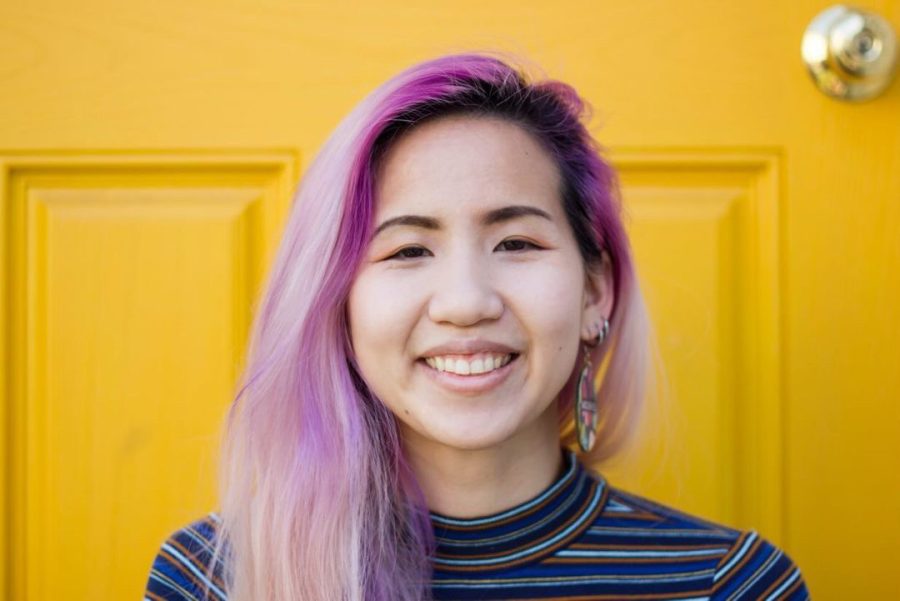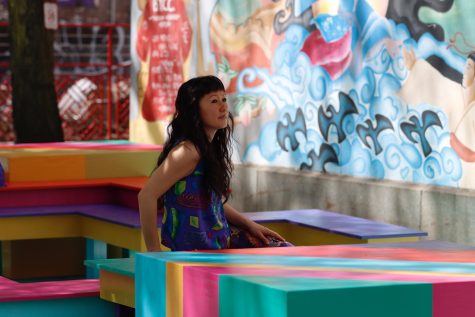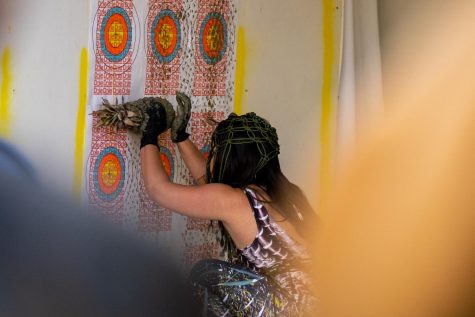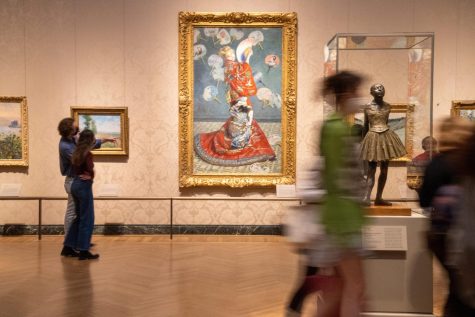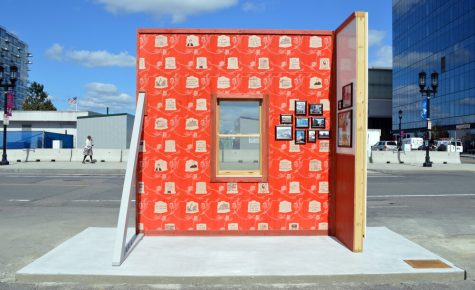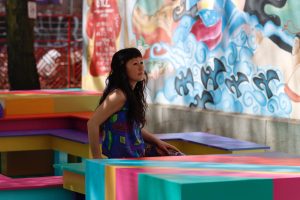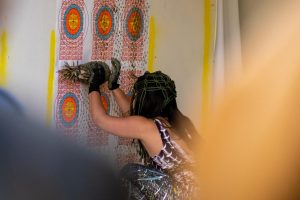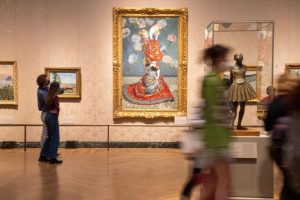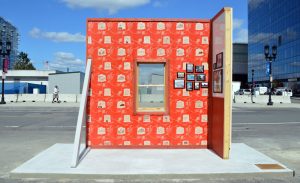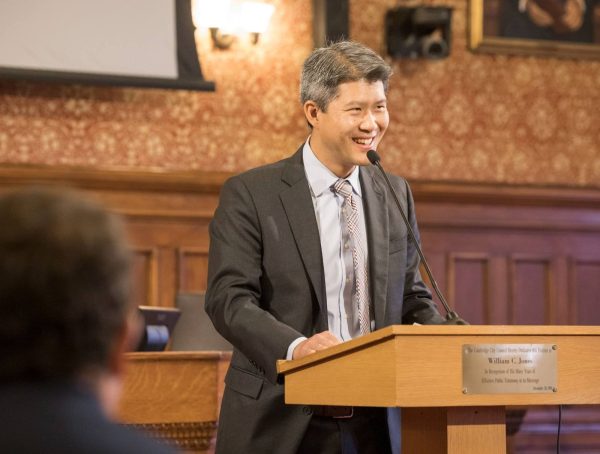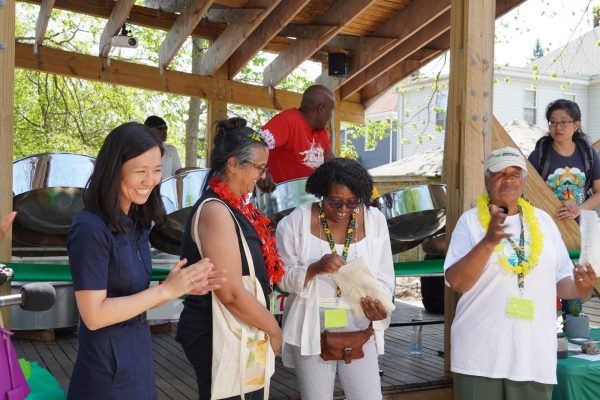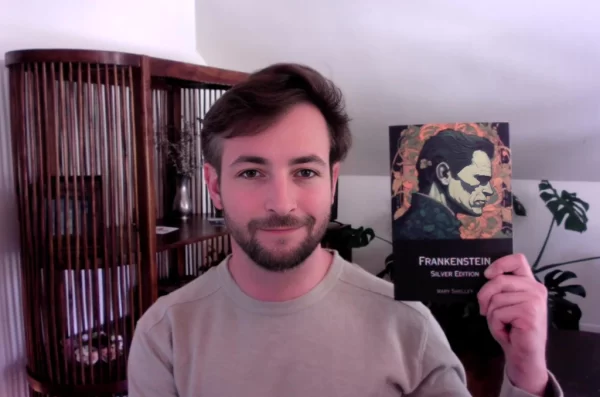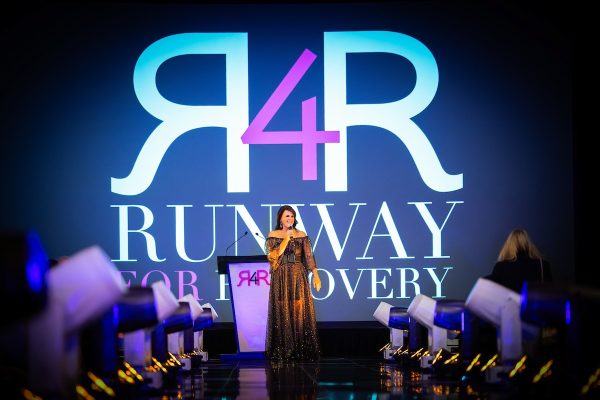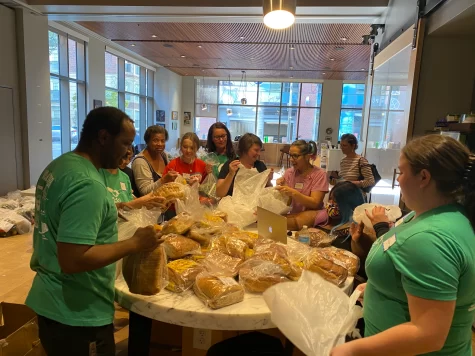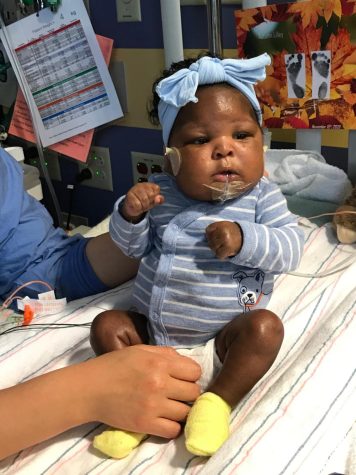Local artist, author Shaina Lu talks art activism and pays homage to Chinatown activists in upcoming book
“One thing that’s really important to me is that the art is happening with the community and not to it, or necessarily even for it.”
Photo: Vivian Ho
Photo of artist, educator and author Shaina Lu.
Shaina Lu, a queer Taiwanese American educator and artist from Malden, Mass., is on to something big.
Lu is what many people could describe as a “superhuman,” someone who can be found everywhere, somehow doing everything; this person is extraordinary and creates feelings of effectiveness through their impactful work and presence that inspires and benefits a collective of people. In time, these awe-spiring and activated moments begin to lend to practical and community-based social change. Most of the time, Lu does this with her art and has nourished a visual presence across Greater Boston, with work that can be seen throughout Malden and Boston’s Chinatown. The art and social conjuncture go hand-in-hand for the esteemed illustrator, often leading communities to seek out her expertise to help develop visual and inviting elements of art that can introduce and explore complex social issues between Boston neighborhoods and identities.
During the week, the graduate of Wellesley College and Harvard Graduate School of Education serves as a media arts teacher at Eliot K-8 Innovation School in the North End; but that doesn’t stop her from being everywhere else. You can also often find Lu with her Sifu and peers lion dancing for Wah Lum Kung Fu Academy at various events across the city, or you can catch her helping out at social cause. Now, the artist is gearing up to release four books, one of which, being published by Harper Collins, may have found inspirational routes in Boston’s Chinatown.
The Scope was able to catch up with Lu to find out how she does this and what it all mean for her, her art and the Greater Boston community. Parts of this interview have been edited for length and clarity.
Can you tell readers a bit about yourself?
I’m a queer Taiwanese American artist. I always say that I’m a person who’s interested in the intersection of art, education and activism. This is how I explain what I do to kids … I like to create community art for social change. Community art means that my art happens in conversation with community members of places where I live, work or play. So for me specifically, I live in Malden, the unceded lands of the Massachusett and Pawtucket people, and I work in the North End right now. And then I play in Chinatown and worked there for a while. So my art is made in dialogue with people I live, work and play with. I’ve done protests with photography and painted collaborative murals in the past, and right now, my passion projects are working on writing and illustrating stories.
You do a lot of community education. You help people and organizations bring their initiatives and inner thoughts to life through public art, event flyers and other visual means often devoted to addressing social and racial justice. As an artist, can you talk to me about the potential ways or conversations from the art you hope to embed into these communities when you take on these projects?
One thing that’s really important to me is that the art is happening with the community and not to it, or necessarily even for it. I think it has to definitely be a collaborative effort. I don’t believe that art should happen to communities. A lot of times, what I am hoping to accomplish is to have both myself as an artist and also, you know, either a resident or community member, working with other community members so that the art feels like it really belongs to the community.
I think the process for that usually is sometimes we have like art workshops where we brainstorm things, sometimes we draw things, we ideate things and we have question prompts that we answer as a group. As a group, [ people that I work with] have things they want their community to know about them or things they want to say; then, we collaboratively develop a message that we want the art to say. So, for example, in working with Asian CDC youth in Malden, we painted two switch boxes together and some things that they were thinking about where ‘we really want people to know that we belong here in Malden, we as an Asian American youth; we want them to know that we stand for racial justice, hear all of our values and we want Malden to feel like a warm, welcoming and inviting place for people of all genders, races and nationalities. So those were the driving things the youth brought that they wanted to express, so I worked with them to figure out the best way to communicate that. Through lots of conversations and brainstorming, we settled on a potluck-themed idea and one on a really inclusive [social justice] march [in the neighborhood].
You’re publishing four new books under Harper Collins soon, and one book specifically is summarized as one girl’s mission to save her favorite community food cart and neighborhood from gentrification. Have you drawn any inspiration from what you see happening in Boston’s Chinatown?
Yeah! I’m super excited. Two actually are picture books. But, my book with Harper Collins is called “Noodle and Bao.” I know that the publisher has described it as like one girl’s plan to save her community, but it really is inspired by the work that community organizations have done. I was inspired by what organizations in Boston’s Chinatown have done and others. I was really inspired by the Parcel C story, in particular. There are a lot of activists who are – I don’t consider myself an activist, I’m not worthy – but these older activists are still around, and they’re still helping and mentoring newer ones. They founded the Chinese Progressive Association (CPA), and they were executive directors of Boston Chinatown Neighborhood Center (BCNC) and ACDC back in the day, and that was something. The Parcel C story is really amazing and inspiring to me.
So I used to work in Chinatown; I used to be the program director of their school-age programs program called Red Oak. It is, I don’t know, a little over 50 years old [and was] started in the Josiah Quincy Elementary School by parents and community members. So I love that grassroots beginning also. I actually have many Red Oak students at my school [in the North End] right now, which was the most amazing thing in a different context. When I was at Red Oak, I took the kids on a lot of walking tours for their field trips. We would look at Chinatown buildings and streets, and we’d be like, ‘Oh, what’s happening here?’ What do you notice happening here in this building?’ ‘Why do you think the inkblock is all made of glass and metal?’ ‘Who do you think these places are for?’ And I think one thing that I thought would have been amazing is if we had some kind of text about gentrification that was anchored in a Chinatown-like setting; it doesn’t have to be Chinatown, but I would have loved to have an accessible middle-grade text for them.
I went to a potluck that my friends were organizing hosted at the Pao Arts Center. They had us write down our wishes for the year, and I was like, ‘I wish or I hope that I will do this.’ So, I started thinking about this story about housing, gentrification, and food and innovation, rooted in a kind of Chinatown history, but I wanted it to feel a little bit universal; [so, the book] has animal protagonists and things like that.
That’s where the story came from. The Parcel C story really inspired me. I was also thinking a lot about the building on Harrison Ave. That my ACDC mural that I painted with Yvonne is on, that building was slated – no longer – but slated to be demolished and become a hotel with an Asian-inspired lobby or something like that. I think that’s no longer the plan for it. I don’t exactly remember what the new plans are. Still, I think back when I was attending Chinatown Residents Association (CRA) meetings then, I felt this really inspiring moment where all the elders from CPA and others, you know, were just sitting in the cafeteria of Josiah Quincy. They all rolled up to the microphones and were like, ‘We don’t want a hotel. We don’t want Chinatown to feel like a very temporary place.’ And it was really cool. I was like, ‘That’s really awesome. You’re coordinated, just like speaking your truth in another language to all these developers sitting here.’ And I was like, I really want that to be in this book. And I want kids to read that.
How can people collaborate with you on an art project in Boston?
I do so on a pretty limited basis. My criteria for commissions are really kind of like, ‘Do I love this, and will I have joy every minute of this project?’ And then I think the other thing is, I know, actually a lot of artists are like, ‘You should not take social justice cause projects because they’re always like, you know, blah, blah, blah.’ But, I think about whether or not the cause is something I believe in or support. I’m doing a commission for Rubato right now. There used to be a bakery in Quincy called Contempo. And the son of the original owner is taking it over now. He was a community organizer for CPA, and I was like, ‘I will absolutely make something for you and your bakery.’ So I feel like our values are really aligned. I love what he’s trying to do with his bakery. He’s like trying to serve existing clientele but also bring in different audiences to their food, which I’m like, ‘I dig that;’ It’s kind of what the graphic novel is about.

